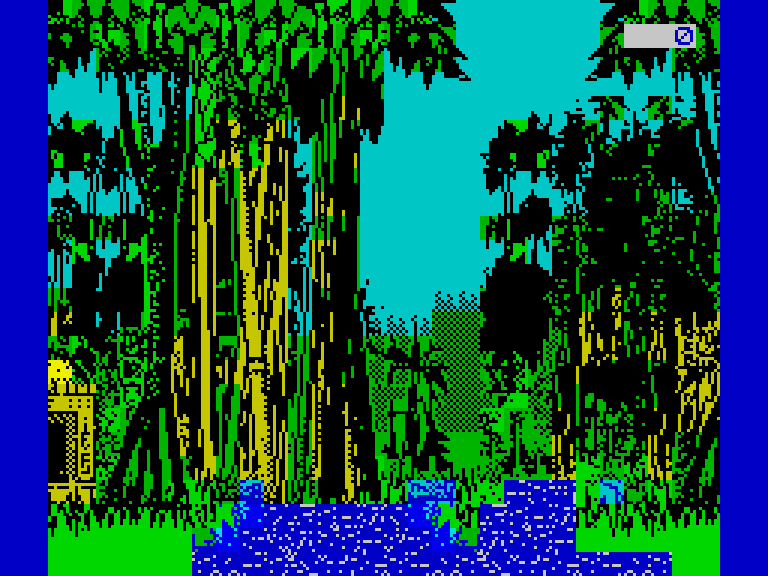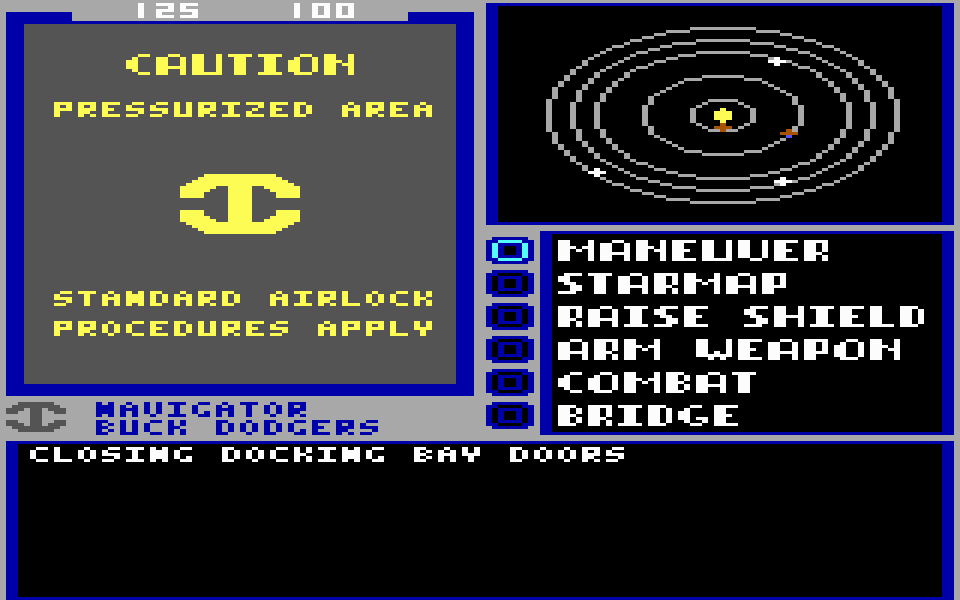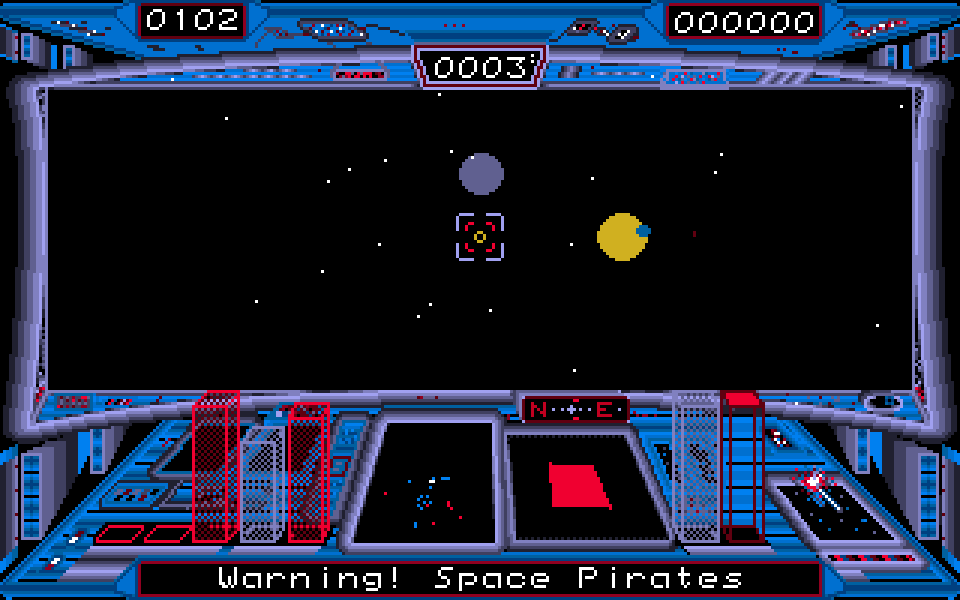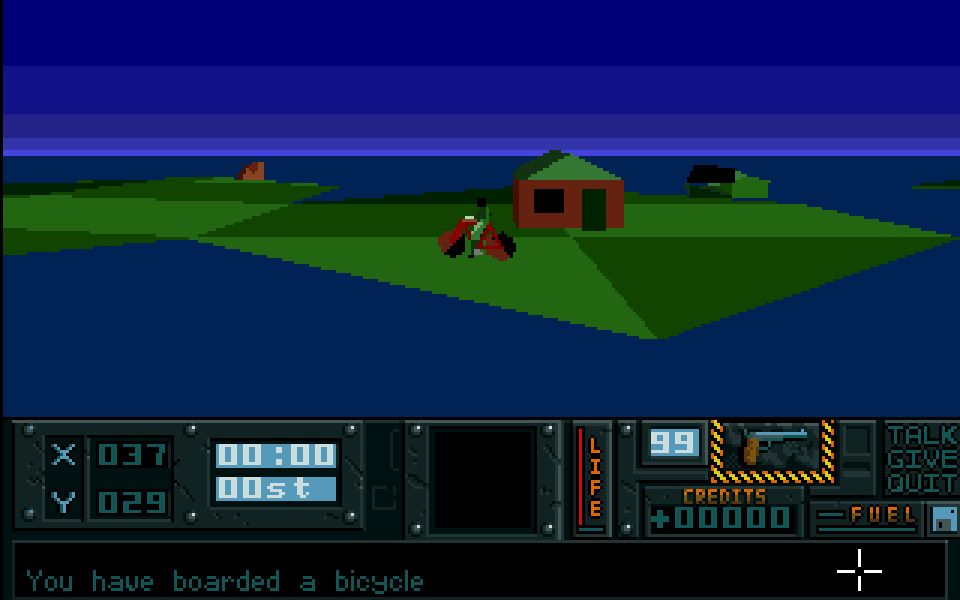Video game news outlets are currently abuzz with articles about No Man’s Sky, one of the most eagerly awaited and massively hyped games in recent years. The game sees you dropped somewhere in space with the goals of exploration, resource management, trading and combat.
The dubious matter of how closely the released game resembles the one that was hyped over the past few years will no doubt be hotly debated for many months or years to come.
Regardless, I think the premise of the game is worth talking about because of its influences. Let’s take a trip back through space and time…
Merchant of Venus (1982)
The oldest space trading game I know of, this took the form of a menu driven interface where you could buy your first ship and then transport and trade cargo at a number of different spaceports. Very much a resource management game, but with manual landings akin to Lunar Lander (1979) that were drawn on screen using groups and combinations of letters from the character set. You can play Merchant of Venus online now or read more about it.

Elite (1984)
The grandfather of space exploration games: Elite. This featured 3D graphics, a whole procedurally generated Universe (8 galaxies, each containing 256 planets), exploration, trading, combat, hyperspace jumps, manual docking to refuel, missions, multiple ship types and space pirates. All in 32KB of RAM!
But there was no landing on the surface of planets. Also, somewhat bizarrely, the cassette version lacks the preset missions and has fewer types of ships. You can’t have everything, I suppose.

Explorer (1986)
We now come to a game that allows exploration on land, thanks to its scenario of crash-landing on an unknown, unexplored planet. The game features an overhead map and procedurally generated screens as you explore the surface, where you make contact with alien species and are able to open portals to get around more easily.
The graphics were quite impressive for the time, though the fact you’re on one planet was a cunning way to get around the limitations of the procedural generation and the similarities between screens of the various land types. Still worth playing.

Starflight (1986)
Whilst Explorer was being released in the UK, over in the USA a development studio called Binary Systems were releasing an all-encompasing space exploration, trading and combat game called Starflight. Arguably even more comprehensive than Elite, it offered exploration, trading, combat but graphically was missing 3D graphics instead going for a hybrid menu-based system with panels of 2D animated graphics to give context to the current objective.
It was released on a range of 8-bit and 16-bit home computers, and also the Sega Genesis/Mega Drive. Game designer Greg Johnson went on to co-create the cult ToeJam & Earl series of games. But, for me, Starflight is his magnum opus. It’s easy to play the game (and its sequel) today on PC thanks to a re-release by GOG or read more about it.

Starglider 2 (1988)
Argonaut Games, a studio best known for creating Star Fox and the Super FX coprocessor chip with/for Nintendo, have an interesting part to play in this story. They’d forged ahead with software-driven 3D engines on computers that had very limited processing power, culminating in Starglider 2 for the Amiga, Atari ST and PC. A tour de force of cutting edge technology, the game allowed exploration of a solar system, planetary surfaces and everywhere in between. Whilst it was set in an open world, the game featured a plot and overall goal for the player: to collect the parts of a neutron bomb and use it to blow up an enemy space station.

Hunter (1991)
The final game I want to mention doesn’t involve space, but it does involve a huge open world to be explored and a mission to complete. Hunter was the perfect example of an open world game where you could use many different types of transport to get around the world, from bicycles to boats and helicopters. You could enter buildings, amass an inventory of collected items that can be used to solve puzzles and progress towards your ultimate goal.
The game had three modes: Hunter (a long story-based mission), Missions (a series of smaller missions), and Action (against the clock search and destroy around the map). The game was the most convincing depiction of a real world I had seen at that point, and remained that way for some years until the often compared Grand Theft Auto series of games.

No Man’s Sky (2016)
My hopes for No Man’s Sky were that it would combine the best features of all the space exploration games that went before it. It could take the Universe, trading, combat and missions from Elite; procedural generation from Explorer; plot-driven goal from Starglider 2; the land exploration and variety of vehicles in Hunter. Heck, maybe it would just be Starflight with a veneer of wonderful 3D graphics.
But the released version of No Man’s Sky is different. Whilst it has all the trappings of a great game, it falls short in several key areas: balance, plot and—most importantly of all—gameplay. So, in a lot of ways the game is actually no more advanced than the 30-or-so year old games I’ve mentioned.
Stylistically, of course, No Man’s Sky is light years ahead. Gameplay wise it’s no better than Elite or Starglider 2, in fact it could be described as being worse. It appears to be rushed, hurried, incomplete, unbalanced.
Most interestingly, the released game lacks a host of features that had been repeatedly mentioned to the press and shown to the public over the last several years. It almost seems as if they’ve chopped huge important chunks off the game in the last few months.
The Gameplay is in Another Galaxy
So what happens next? In my experience it’s uncommon for such deficiencies in the game to be patched or updated after a few initial patches that correct serious bugs and game-breaking features.
To that end, I wouldn’t be surprised if Hello Games and Sony roll out a different—more and capable—version of No Man’s Sky for the soon to be revealed PlayStation 4 Neo.
In a funny way that would make the game even closer to Elite with a different game depending on the platform you choose to play it on.